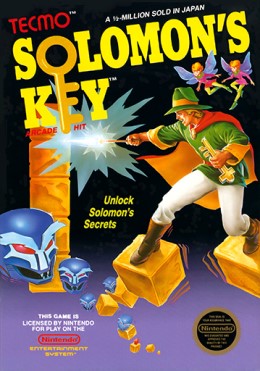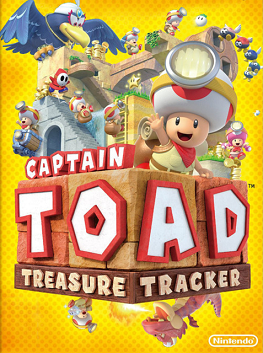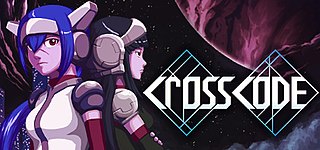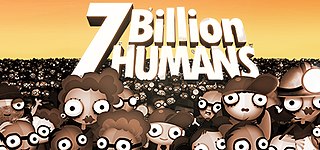
Solomon's Key is a puzzle game developed by Tecmo in 1986 for an arcade release on custom hardware based on the Z80 chipset. It was ported to multiple systems including the Nintendo Entertainment System and Commodore 64. The PC Engine version was known as Zipang and the Game Boy version as Solomon's Club. A prequel, Solomon's Key 2, was released in 1992 for the NES. The game was also ported to Virtual Console for the Nintendo 3DS and Wii U in 2006 and later to Nintendo Switch Online in 2018.

Secret Files: Tunguska is a 2006 graphic adventure video game developed by German studios Fusionsphere Systems and Animation Arts and published by Deep Silver for Microsoft Windows, Nintendo DS, Wii, iOS, Android, Wii U and Nintendo Switch. The game is the start of the Secret Files trilogy, with a sequel, Secret Files 2: Puritas Cordis, being released in 2008.

A Mii is a customizable avatar used on several Nintendo video game consoles and mobile apps. The name Mii is a portmanteau of "Wii" and "me", referring to them typically being avatars of the players. Miis were first introduced on the Wii console in 2006 and later appeared on the DS, 3DS, the Wii U, the Switch, and various apps for smart devices such as Miitomo. Miis can be created using different body, facial and clothing features, and can then be used as characters within games on the consoles, either as an avatar of a specific player or in some games portrayed as characters with their own personalities. Miis can be shared and transferred between consoles, either manually or automatically with other users over the internet and local wireless communications.

Avatar: The Game is a 2009 third-person shooter action-adventure game based on the 2009 film Avatar. The game was developed by Ubisoft Montreal and published by Ubisoft. It was released on the PlayStation 3, Xbox 360, Microsoft Windows, Wii, and Nintendo DS on December 1, 2009, with a PlayStation Portable version later released on December 7. It uses the same technology as the film to be displayed in stereoscopic 3D. As of May 19, 2010, the game has sold nearly 2.7 million copies.

World of Goo is a physics-based puzzle video game developed and published by independent game developer 2D Boy. The game was released on Microsoft Windows and Wii on October 13, 2008, with releases on Nintendo Switch, Mac OS X, Linux, and various mobile devices in subsequent years. World of Goo has the player use small balls of goo to create bridges and similar structures over chasms and obstacles to help other goo balls reach a goal point, with the challenge to use as few goo balls as possible to build this structure.

Scribblenauts is an emergent puzzle action video game developed by 5th Cell and published by Warner Bros. Interactive Entertainment for the Nintendo DS. The game was released in 2009 in all regions except Japan, and in 2011 in Japan as Flash Puzzle: Maxwell's Mysterious Notebook by Konami. It is the third Nintendo DS video game made by 5th Cell, the first two being Drawn to Life and Lock's Quest. The objective of Scribblenauts, as implied by its catchphrase "Write Anything, Solve Everything", is to complete puzzles to collect "Starites", helped by the player's ability to summon any object by writing its name on the touchscreen. The game is considered by its developers to help promote emergent gameplay by challenging the player to solve its puzzles within certain limitations or through multiple solutions.

Vessel is a physics-based, steampunk, puzzle-platform game developed by Strange Loop Games and published by indiePub. It was released March 1, 2012 for Microsoft Windows, for Linux on December 11, 2012 and for PlayStation 3's PlayStation Network in March 2014. An OS X version was released on January 7, 2013.

Scribblenauts Unlimited is a puzzle sandbox video game developed by 5th Cell and published by Warner Bros. Interactive Entertainment for the Nintendo 3DS, Wii U, Microsoft Windows, iOS and Android. The game was announced during Nintendo's E3 2012 press conference on June 5. It is the fourth title in the Scribblenauts series, as a launch title for the Wii U console. The game was later released alongside its successor Scribblenauts Unmasked in Scribblenauts Mega Pack in 2018 with extra content.

Little Inferno is a puzzle video game developed and published by American independent game developer Tomorrow Corporation. The game was released for the Wii U in November 2012 in North America, Europe and Australasia. Microsoft Windows, iOS, OS X, Linux and Android versions followed throughout 2013. A Nintendo Switch version was released in March 2017 in North America, Europe and Australia.

Toki Tori 2 is a puzzle platform game, developed by Dutch video game development company Two Tribes. It is the sequel to the 2001 game Toki Tori. The game was originally announced in December 2011 with an intended release for Spring 2012 for Steam and iOS devices, but the game was pushed back due to longer than expected development times. The game was released on April 4, 2013 for Wii U and on July 11 on Steam for Windows and for Mac OS X.

Captain Toad: Treasure Tracker is a 2014 action puzzle video game developed and published by Nintendo for the Wii U. The game was re-released for the Nintendo Switch and Nintendo 3DS in 2018 with additional content. It is a spin-off of the Super Mario series and a part of the larger Mario franchise. The game stars Captain Toad and Toadette as they complete levels, defeat enemies and save each other from the antagonist Wingo. Each level is contained within a miniature diorama-like environment that requires puzzle-solving and platforming challenges to complete. The player also uses the Wii U GamePad to rotate the camera and reveal new information and interact with the environment.

CrossCode is a 2018 action role-playing game developed by Radical Fish Games and published by Deck13. Players control Lea, a player in a fictional MMORPG called CrossWorlds who wakes up with no memory and is unable to speak. Gameplay involves the player employing both ranged and melee shots to solve puzzles and defeat enemies, with differing elemental modes granting different powers used in combat and exploring.

Typoman is an independent video game developed by German indie studio Brainseed Factory for Nintendo Switch, Wii U, Xbox One, PlayStation 4 and PC, and mobile. The game follows a hero named HERO who crafts words to alter the environment around him.

Human: Fall Flat is a puzzle-platform game developed by No Brakes Games and published by Curve Digital. It was initially released for Microsoft Windows, macOS, and Linux in July 2016, and received ports for PlayStation 4, PlayStation 5, Xbox One, Xbox Series X/S, Nintendo Switch, Google Stadia, and iOS and Android over the next several years.

7 Billion Humans is a puzzle video game developed and published by American studio Tomorrow Corporation. It was released on August 23, 2018, for Microsoft Windows, macOS, Linux, and the Nintendo Switch on October 25, 2018. The game was later released for Android on July 25, 2021. Designed as a sequel to Human Resource Machine, players solve puzzles by moving multiple data cubes with human workers using an in-game programming language.

Eliza is a visual novel game developed by Zachtronics, released on Windows, macOS, and Linux on August 12, 2019, with a Nintendo Switch version on October 10, 2019.

State of Mind is a 2018 graphic adventure game developed and published by Daedalic Entertainment. A cyberpunk story set in the near future, the game explores transhumanist themes. The game was released for Windows, macOS, Linux, PlayStation 4, Nintendo Switch and Xbox One in August 2018. It received mixed reviews upon release.

Bomber Crew is a real-time strategy video game developed by Runner Duck and published by Curve Digital. It was released on Microsoft Windows, OS X and Linux on 19 October 2017. It was released for PlayStation 4, Xbox One and Nintendo Switch on July 10, 2018. A sequel, Space Crew, was released in 2020.
Fire: Ungh's Quest, also known simply as Fire, is an point and click-puzzle video game developed and published by Daedalic Entertainment. The game was initially released for Microsoft Windows on April 9, 2015 and was later released for Wii U on October 20, 2016, for Nintendo Switch on May 12, 2021 and later for IOS, macOS and SteamOS + Linux. The game received mixed reviews. Some of the negative points mentioned were the exaggerated ease of quests and the short duration of the game.

Back to Bed is an indie puzzle video game that was originally developed and published by Bedtime Digital Studios. The game was first released as a browser game in 2011, and as a commercial game in 2014.


















